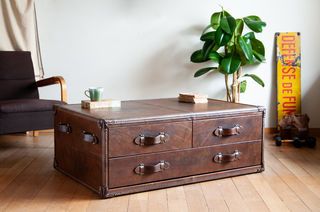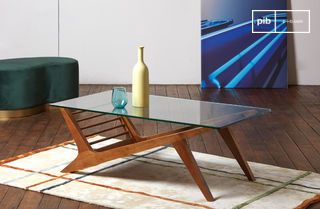Unique coffee tables
Original coffee tables shift the formal codes of the living room without sacrificing function. An original coffee table is based on choices of form, material or assembly that deliberately disrupt expectations. It introduces a controlled break in a space that is often structured symmetrically or linearly. Asymmetrical volumes, unconventional bases, fragmented or modular surfaces: each piece questions its own place in the composition. This typology requires a minimum of legibility around it to avoid cluttering effects. It often functions as a single piece, without redundancy with other furniture.
read more >Filters
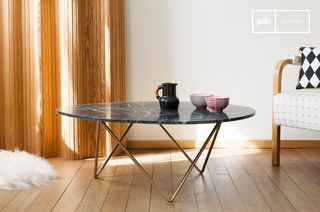
Green marble coffee tableTrivisan
€595 €535-10%
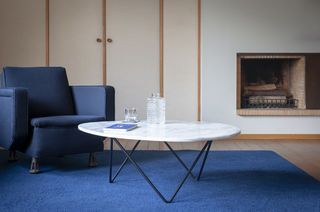
White marble coffee tableTrivisan
€595 €535-10%
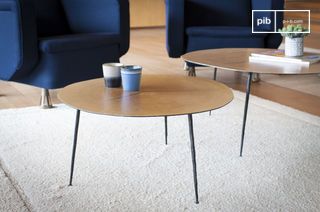
"Round metal coffee table ""Two"""Xylème
€495 €445-10%
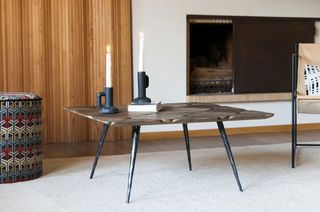
Elm wood coffee tableLincoln
€785 €705-10%
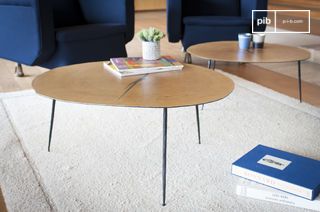
Round metal coffee table OneXylème
€495 €445-10%
10 festive days
10% off our tables and consoles
Welcome your guests in style · Limited stock
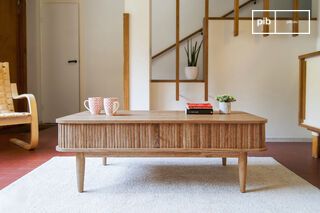
Oak side table with curtainsRitz
€595 €535-10%
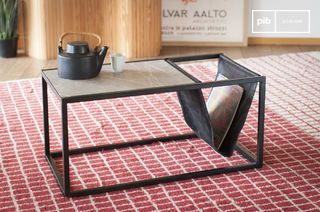
Stone magazine holder coffee tableIbiza
€365 €330-10%
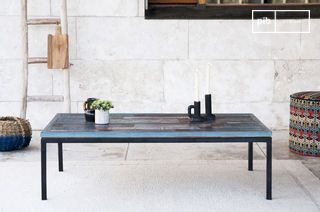
Wooden coffee tableMoriz
€495 €445-10%
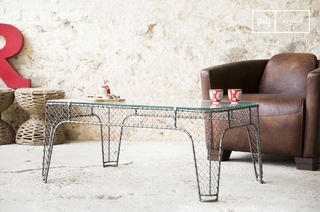
Gridded metal industrial coffee tableOntario
€475 €430-10%
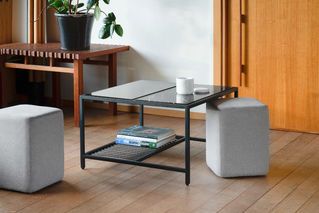
Marble coffee table with poufsNoora
€560 €505-10%

Large elm wood coffee tableLincoln
€985 €885-10%
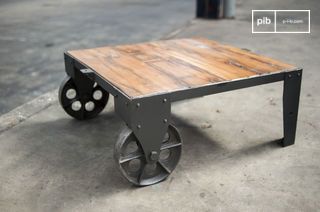
Wooden Coffee TableRailway
€530 €475-10%
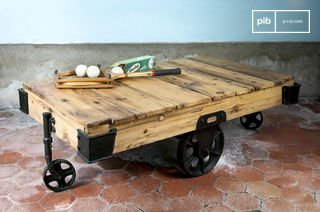
Wooden Coffee TableWood Wagon
€725 €655-10%

What is an original coffee table?
An original coffee table is not limited to a standard format or material. It is distinguished by a deliberate variation in the furniture's constituent elements: asymmetrical shapes, off-center legs, contrasting materials or unexpected assembly principles. This singularity is not decorative, but structural. It changes the perception of the living room and forces us to rethink the relationship between furniture and space.
This typology is not based on the addition of a motif or color, but on a shift in design conventions. The table may have a non-orthogonal geometry, a multi-level top, or a base dissociated from the visible support. The aim is to maintain the support function while introducing a discontinuity in spatial rhythm. It can break up an overly repetitive line, restore a legible center in an overly neutral environment, or stabilize a deliberately fragmented composition.
Forms, formats and layout
Original coffee tables don't always fit into the usual formats (round, square, rectangular). Some adopt irregular, fragmented or evolving contours. Others combine several heights in a single structure, modifying use according to positioning in the room. This type of table often functions as a centerpiece, but can also accompany a modular composition, such as a duo of complementary tables.
Compact formats allow freer use, even in small living rooms, provided the immediate surroundings are sufficiently unobstructed. In an open space, an original coffee table acts as a visual landmark: it restores hierarchy without imposing a rigid axis. The layout is based on a clear reading of the flows around the piece of furniture, with minimal clearance to avoid any sensation of blockage.
The table can also function as a more imposing volume if it stands alone in the rest area. In this case, it plays a dancage role, comparable to a sculpture or architectural element. Its shape can incorporate hidden storage, functional recesses or inclined planes that naturally orient objects.
Materials and contrasting effects
The original coffee table often relies on contrasting material combinations. Wood and glass, metal and stone, concrete and textile: here, contrast is a lever to offset the overall effect. Finishes can also vary within the same piece of furniture, with a raw top combined with a smooth base, or a massive base topped by a visually light top.
Some models play on transparency, others on density. The choice of material does not respond to a logic of uniformity, but of controlled imbalance. A fragmented surface, a visible joint or a solid volume offset from the central axis all contribute to this effect. They can still be used, but often require an adaptation of gesture or posture.
These objects are often placed in a sober environment, in order to maintain overall legibility. They can also fit into a busier decor if they introduce visual breathing space through form or material. The important thing is to be clear about their role: neither purely decorative, nor strictly utilitarian.
An original coffee table can change the visual rhythm of a living room without altering its structure. It relies on a careful reading of space, uses and possible points of rupture. It introduces a stable shift into a composition thought through over time.
